Columbia, SC Pollen and Allergy Report for Summer 2023
Pollen Allergy Trends in Columbia, SC
When is pollen lowest in Columbia, SC?

February
Lowest month total PPM
Avg. PPM
When is pollen highest in Columbia, SC?

April
Highest month total PPM
Avg. PPM
How does pollen in Columbia, SC compare to South Carolina?
Columbia has a higher average PPM than the state of South Carolina.
Columbia yearly avg PPM:
South Carolina yearly avg PPM:
How does pollen in Columbia, SC compare to the USA?
Columbia has a higher average PPM than the USA.
Columbia yearly avg PPM:
USA yearly avg PPM:
Is pollen worse this year in Columbia, SC?
Spring 2023 was better than spring 2022.
Spring 2023 PPM:
Spring 2022 PPM:
Average PPM in Columbia, SC

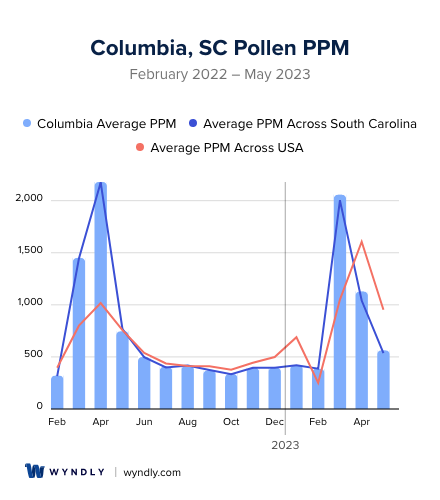
Columbia, SC Pollen and Allergy Breakdown by Month
Grass
When is grass pollen highest in Columbia, SC?
April has the highest grass pollen in Columbia, SC with an average PPM of
When is grass pollen lowest in Columbia, SC?
December has the lowest grass pollen in Columbia, SC with an average PPM of
Tree
When is tree pollen highest in Columbia, SC?
March has the highest tree pollen in Columbia, SC with an average PPM of
When is tree pollen lowest in Columbia, SC?
October has the lowest tree pollen in Columbia, SC with an average PPM of
Weed
When is weed pollen highest in Columbia, SC?
April has the highest weed pollen in Columbia, SC with an average PPM of
When is weed pollen lowest in Columbia, SC?
February has the lowest weed pollen in Columbia, SC with an average PPM of
Columbia, SC Pollen Monthly Breakdown by Pollen Type
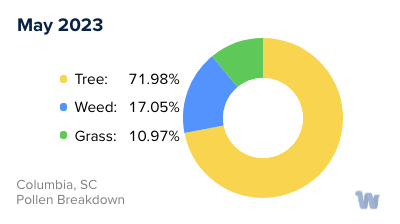
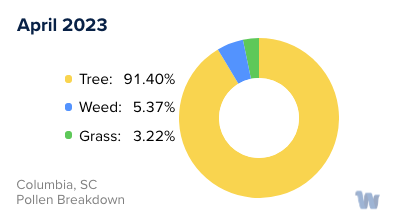

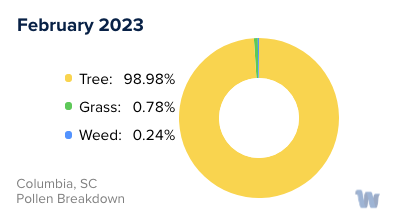
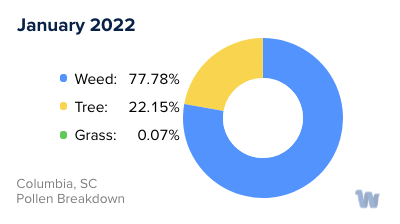
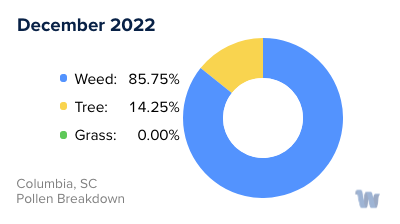
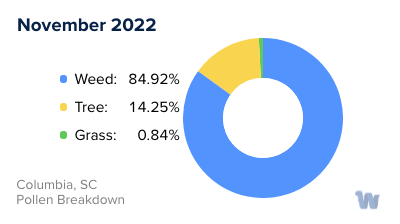
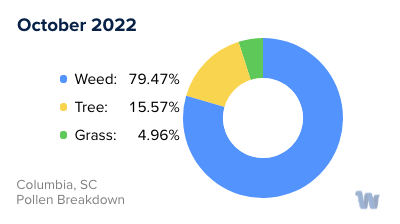

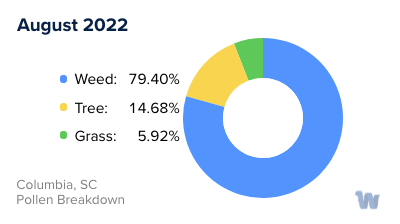
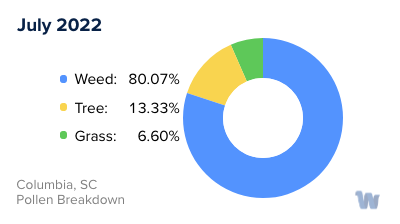
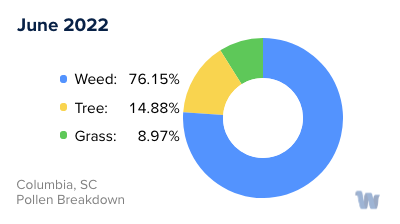

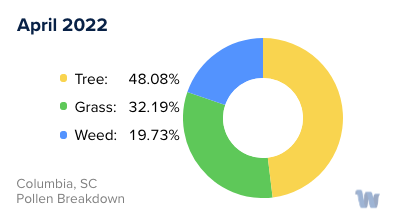
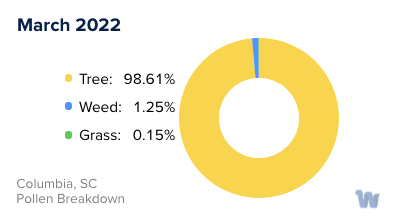
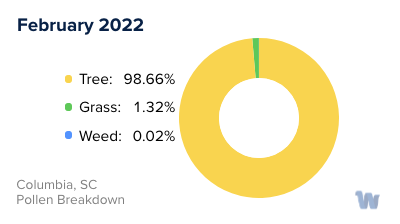
Pollen and Hay Fever in Columbia, SC
Columbia, South Carolina, is a verdant city with a mild climate that fosters an abundance of plant life. This idyllic setting, however, can prove challenging for those who suffer from pollen allergies, as the city's plant diversity leads to high concentrations of pollen from different types of grasses, trees, and weeds.
The allergy season in Columbia starts as early as February and usually ends in November, giving residents a brief respite during the winter months. The city's pollen allergies are primarily triggered during three distinct periods of the year, each characterized by a different type of plant life releasing its pollen.
Springtime allergies in Columbia are mostly caused by tree pollen. The city is home to a variety of trees known for their allergenic pollen, including the Pine, Hickory, Ash, Cedar, and Willow trees. The onset of spring, therefore, marks the beginning of the allergy season for many of the city's residents.
As spring transitions into summer, the source of pollen shifts from trees to grasses. Residents with allergies may find themselves reacting to the pollen of Ryegrass, Bermuda grass, or Sweet vernal grass during the warmer months of the year. This change in pollen source means that even as the trees become less of a concern, summer still poses its challenges for those susceptible to pollen allergies.
As the year progresses, the fall season ushers in a third wave of allergies, this time caused by weed pollen. Plants such as Ragweed, Marsh elder, Sagebrush, and Russian thistle release their pollen during this period, making fall another challenging time for Columbia's allergy sufferers.
In Columbia, it's essential to be aware of pollen counts, particularly in the peak months of April, June, and September. Despite the challenges, understanding the nature of pollen allergies and the times of year when they are most prevalent can help residents navigate the seasons with greater ease and preparedness.


